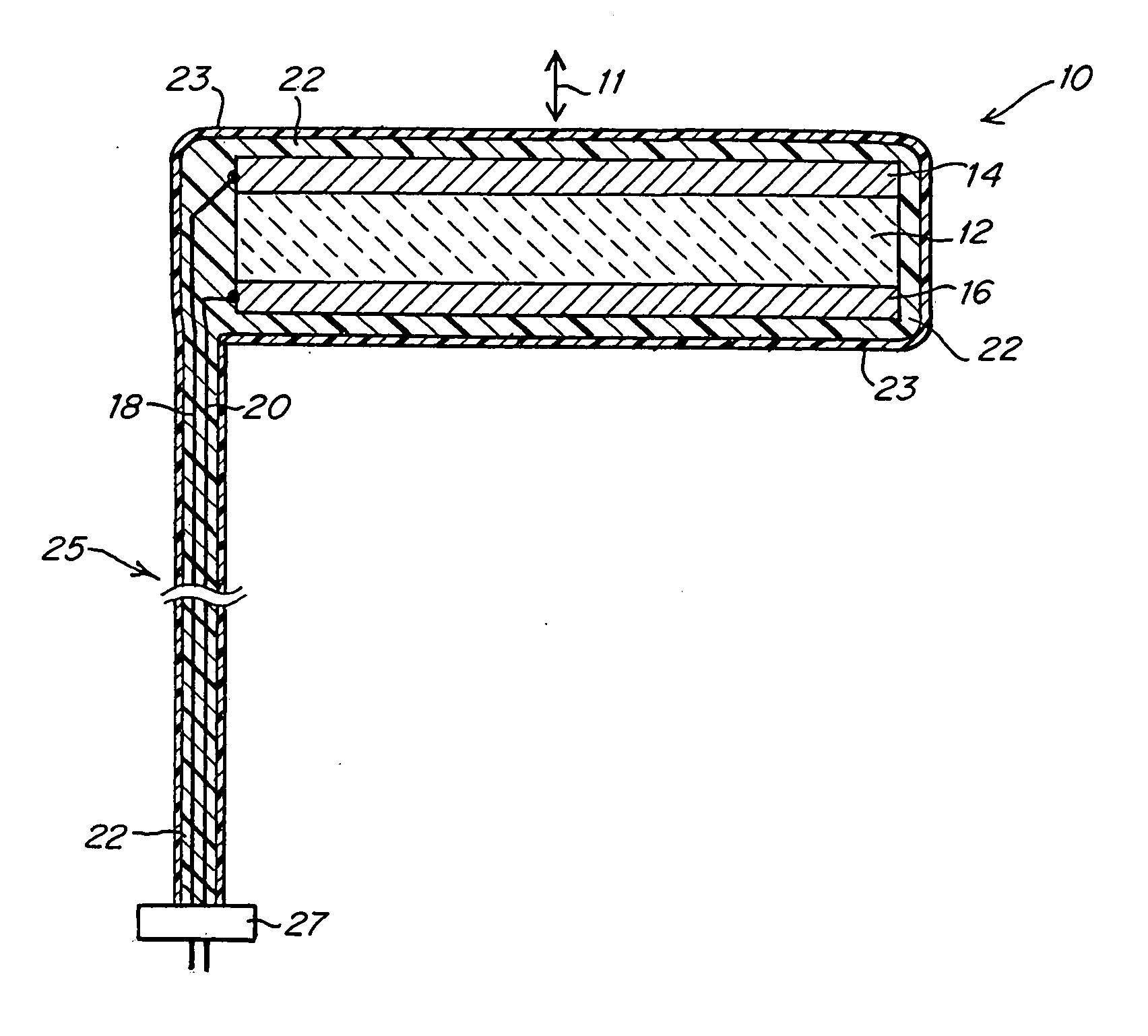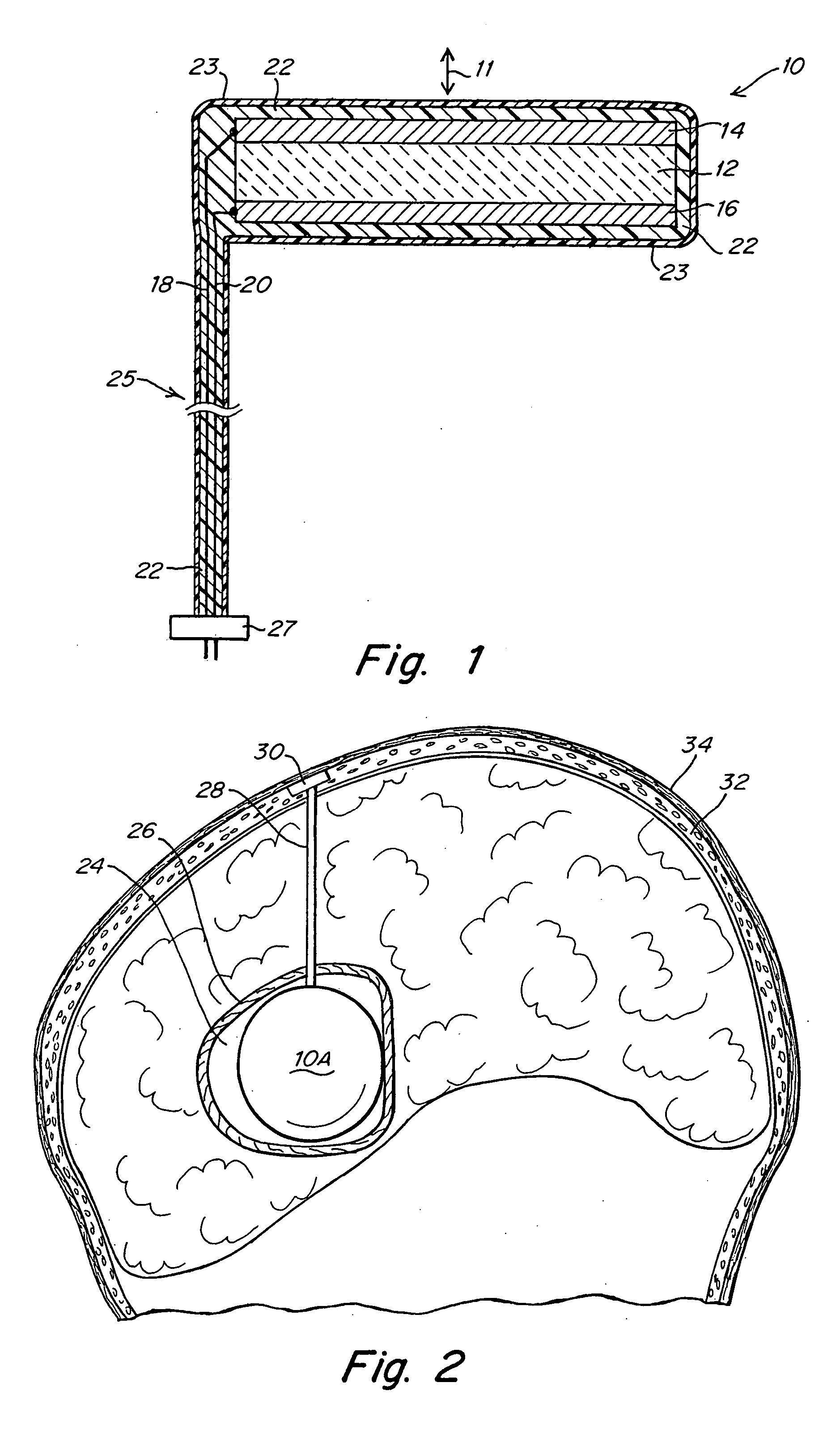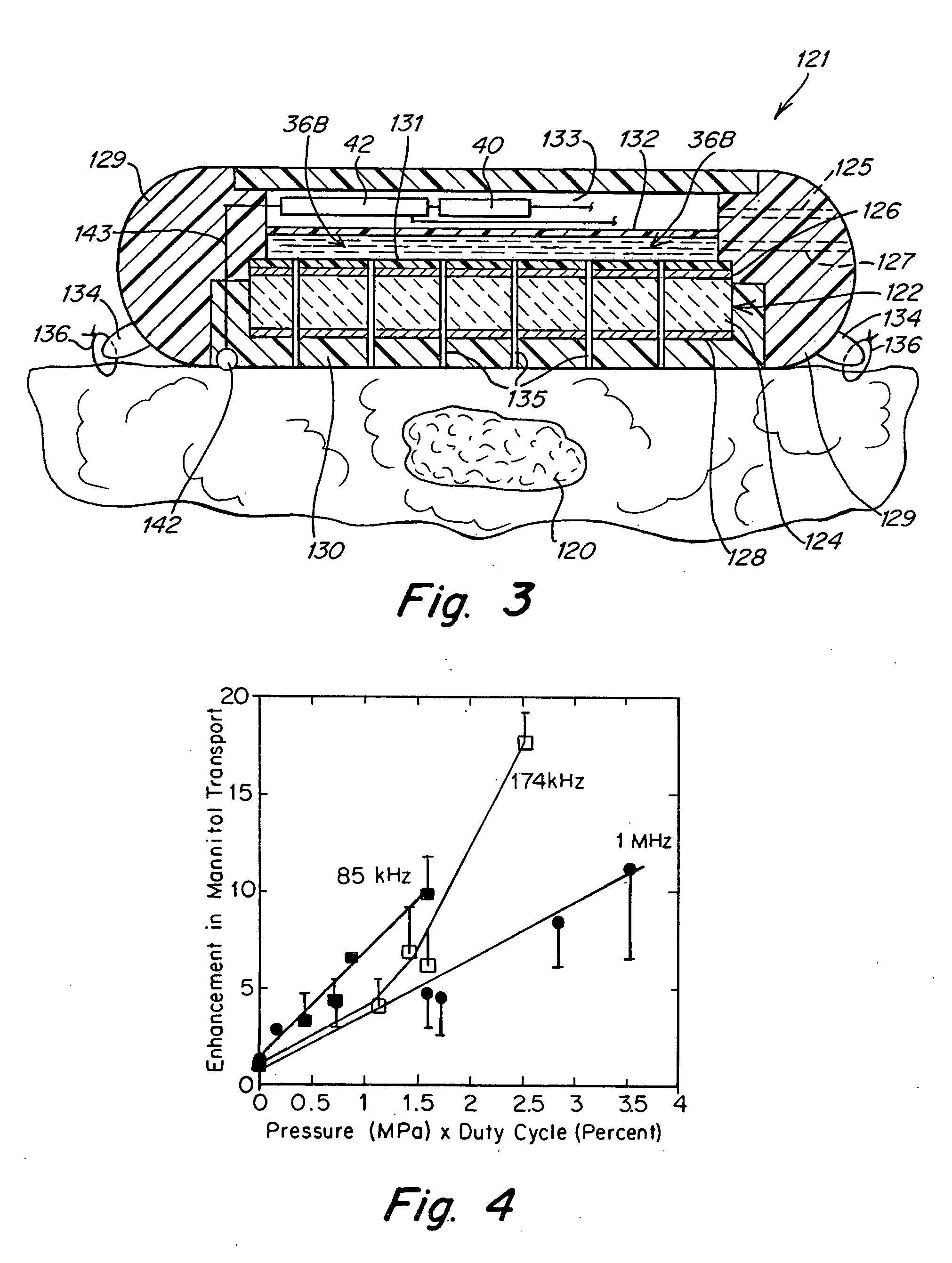Method and apparatus for ultrasonically increasing the transportation of therapeutic substances through tissue
a technology of ultrasonically increasing and therapeutic substances, applied in the field of implantable ultrasound transducer devices, can solve the problems of systemic methods, undesirable side effects, untargeted organs or tissues, etc., and achieve the effects of enhancing the depth, and enhancing the transportation of therapeutic substances
- Summary
- Abstract
- Description
- Claims
- Application Information
AI Technical Summary
Benefits of technology
Problems solved by technology
Method used
Image
Examples
Embodiment Construction
[0033]FIG. 1 illustrates an implantable ultrasound transducer assembly 10 as may be used in practicing the invention. The transducer assembly 10 includes a piezoelectric layer 12, a pair of conductive electrode layers 14, 16 overlying opposite faces of the piezoelectric layer 12 and defining the poles of the transducer, a pair of conductors 18, 20 connected to electrodes 14, 16, an acoustic matching layer 22 and a layer of biocompatible material 23 to encapsulate the components. The conductors 18, 20 are housed in an umbilical cord 25 formed from materials that provide electrical insulation and assure biocompatibility as will be familiar to those skilled in the art of implantable devices. The end of the cord 25 may be connected directly to a controllable power source or may have a connector 27 by which the conductors 18, 20 can be coupled to a source of electrical signals to activate the transducer. The device shown in FIG. 1 will emit ultrasound energy in opposite directions along ...
PUM
 Login to View More
Login to View More Abstract
Description
Claims
Application Information
 Login to View More
Login to View More - R&D
- Intellectual Property
- Life Sciences
- Materials
- Tech Scout
- Unparalleled Data Quality
- Higher Quality Content
- 60% Fewer Hallucinations
Browse by: Latest US Patents, China's latest patents, Technical Efficacy Thesaurus, Application Domain, Technology Topic, Popular Technical Reports.
© 2025 PatSnap. All rights reserved.Legal|Privacy policy|Modern Slavery Act Transparency Statement|Sitemap|About US| Contact US: help@patsnap.com



